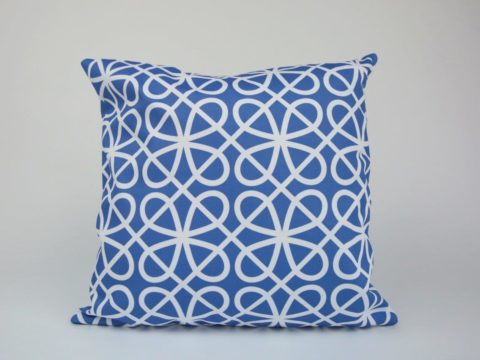Marguerite of Austria: Life Story
Chapter 11 : Marriages
By the end of April 1514, Marguerite was in despair. She had managed to hold off Henry’s increased suspicions that Maximilian, as well as Ferdinand, was about to double-cross him. She had agreed an extension for the marriage of Charles to the end of May, but she told her father that if it did not take place then, Maximilian would ‘make enemies of his friends’, and she herself would lose all credibility.
Ferdinand hoped to use his former daughter-in-law’s diplomatic skills to the utmost. He wrote her a sugary letter, assuring her that she was ‘the most important personage in Christendom since she acts mediator in almost all negotiations’. He gave parallel instructions to his envoy was to work on her to persuade Henry to enter into the truce with France, as only by Maximilian, Ferdinand, the Pope and Henry working together, would France keep any obligations.
The duplicity of Ferdinand as revealed in the correspondence of the time is quite astounding – knowing Charles was betrothed to Mary of England, he agreed a marriage on behalf of his grandson with Renée of France – informing Maximilian, but persuading the Emperor to keep the details from Marguerite!
On 5th May, Henry wrote again to Marguerite, saying he could not possibly honourably enter a truce with France that he had had no part in negotiating; that he was surprised at the delays over the marriage, and finally, that he requested her to send soldiers back to Guisnes in accordance with their current treaty.
Compounding Marguerite’s aggravation, was the continued spread of the story that she planned to marry Brandon, now ennobled as Duke of Suffolk. Whatever Marguerite’s private emotions, the suggestion that a daughter of the emperor would marry the king of England’s jousting companion was offensive to the imperial ears, and Marguerite and Maximilian were anxious to dispel the notion as soon as possible. Henry was asked not to include Suffolk on the forthcoming mission to Marguerite to discuss, yet again, the marriage of Charles and Mary. Henry had no option but to agree, and sent others instead.
Marguerite was between a rock and a hard place in the matter of the marriage. All her authority came from either her father or her nephew – she had no rights of her own to pursue any foreign policy on their behalf. She could advise, explain, plead and remonstrate, but, ultimately, it was in the hands of Maximilian, and, increasingly Charles. Charles, whether influenced by his grandfather, or by Chièvres, or possibly in a spirit of adolescent rebellion against Marguerite who had been a second mother to him, showed no inclination to marry Princess Mary, being heard to remark that the eighteen-year-old princess was too old for him
Marguerite urged that the marriage would release much needed cash from England, but to no avail. On 4th June, Henry wrote a stiff letter, regretting that the nuptials were still postponed, and referring her to his ambassadors. It appeared the matter was dead.
The marriage, or lack of marriage, of Charles was not Marguerite’s only nuptial preoccupation. Charles of Guelders was still troublesome, and she feared he would induce the Duke of Cleves to give him his sister as a bride – she recommended that Maximilian forbid the union. Perhaps more important, though, was the marriage of her niece, the Archduchess Isabel of Austria. Isabel was the second of the daughters of Philip of Burgundy and Juana of Castile, and, as noted above, had been brought up by Marguerite.
On 11th June 1514, thirteen year old Isabel was married by proxy to Christian II of Denmark, a man twenty years her senior. Charles danced so vigorously at his sister’s wedding that over-exertion was presumed to be the cause of the fever that laid him low for several weeks thereafter. Isabel remained with Marguerite for a further year, until she was old enough to consummate the marriage, travelling to Denmark in the early summer of 1515.
Shortly after Isabel’s proxy marriage, another union was arranged – a double marriage for the next children of the family – the Archduke Ferdinand and the Archduchess Mary to another pair of siblings – Anne and Louis of Hungary. These two were the children of Vladislaus II, who was King of Bohemia and of Hungary, by election. Archduchess Mary travelled to Vienna, to reside with Maximilian and continue her education alongside her future husband and sister-in-law. Marguerite now had only Charles, who was close to his majority, and the eldest sister, Eleonora, left in her care.
Eleonora, sixteen, was proposed for the recently-widowed Louis XII. Marguerite, however, objected. The age gap was too great, she protested, and Eleonora too thin (ie not physically mature enough for marriage). Ferdinand pooh-poohed her objections. Age gaps in royalty were never considered, thin women bore more children, and it would be of ‘inestimable value’ to Charles to have his sister as queen of France, and, potentially, mother of the male heir Louis longed for.
In the meantime, Henry of England, angry and insulted at the behaviour of Maximilian and Ferdinand, managed to steal a march on both. He swooped in to offer a truce to Louis, with Princess Mary as the bait. The recently-widowed Louis quickly overcame his sadness at the death of Anne of Brittany, and came to terms immediately. Charles had lost his bride, and the English alliance through the devious and dishonourable dealings of both his grandfathers.
Of less political moment to Marguerite was the departure of her maid-of-honour, Anne Boleyn, to join the entourage of the new queen of France.
Marguerite of Austria
Family Tree
